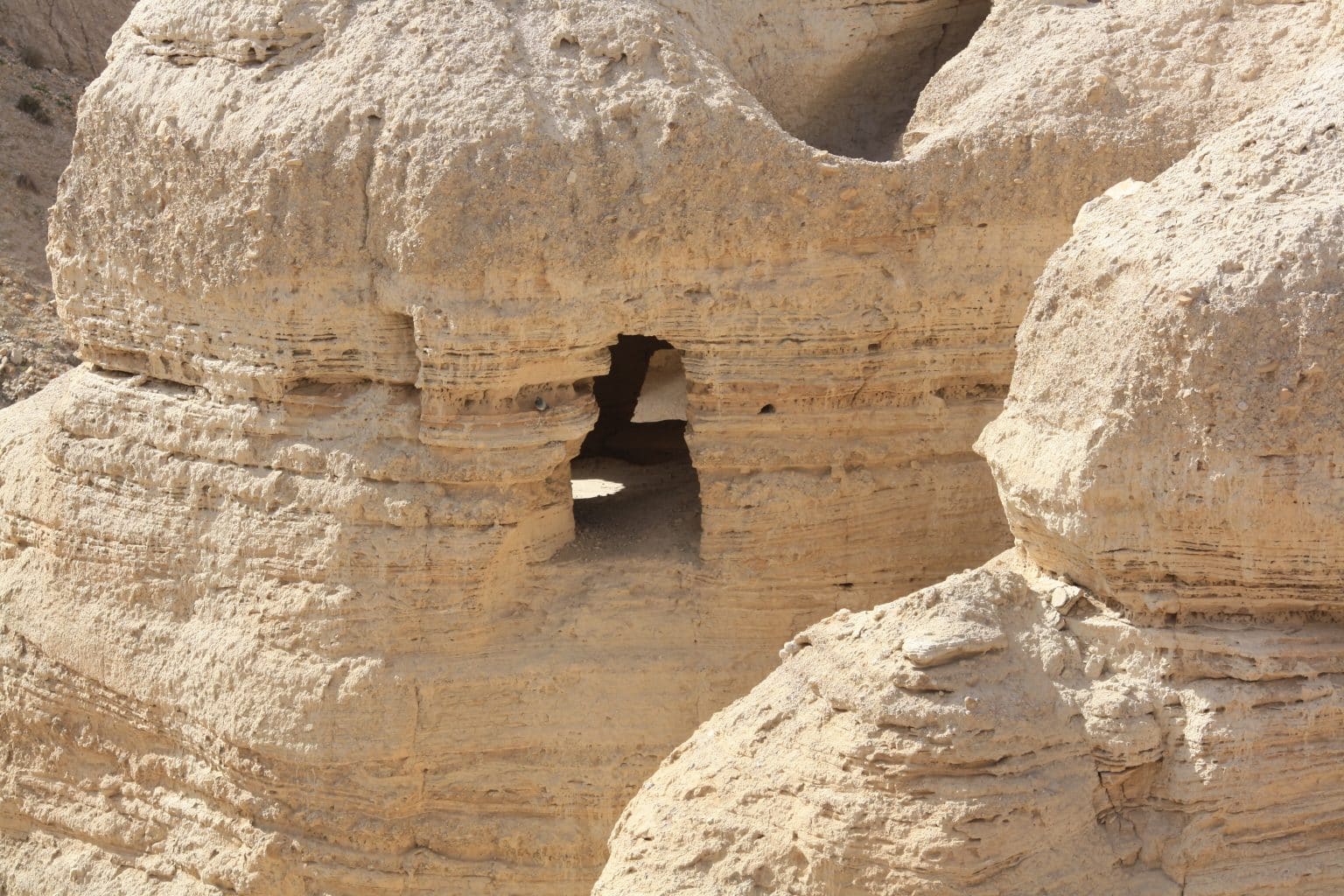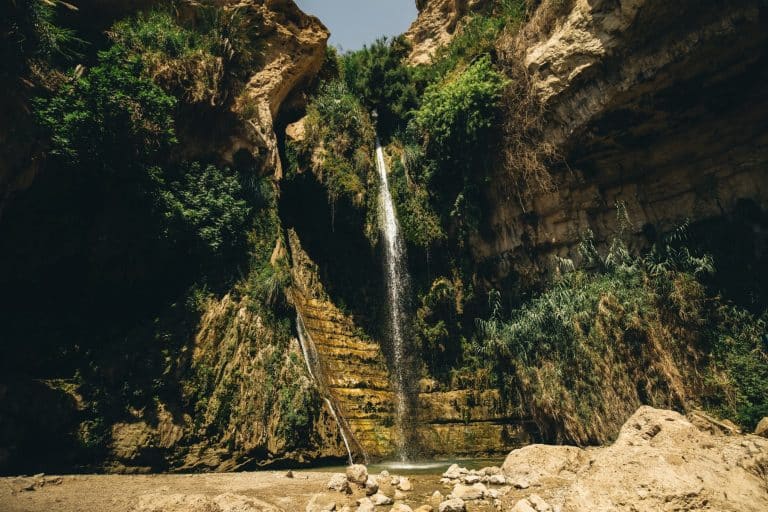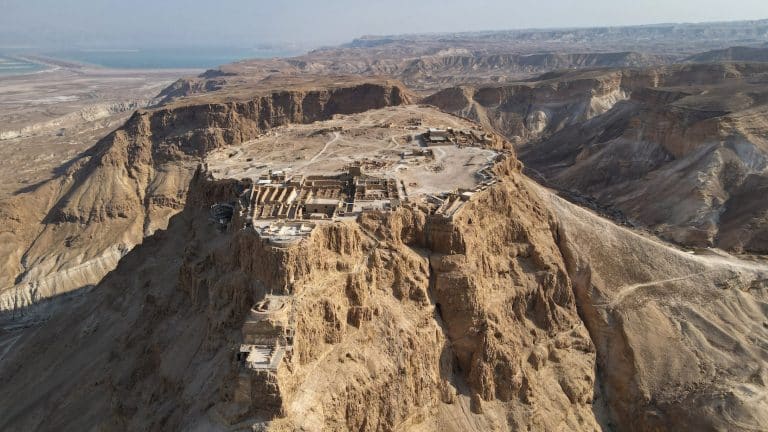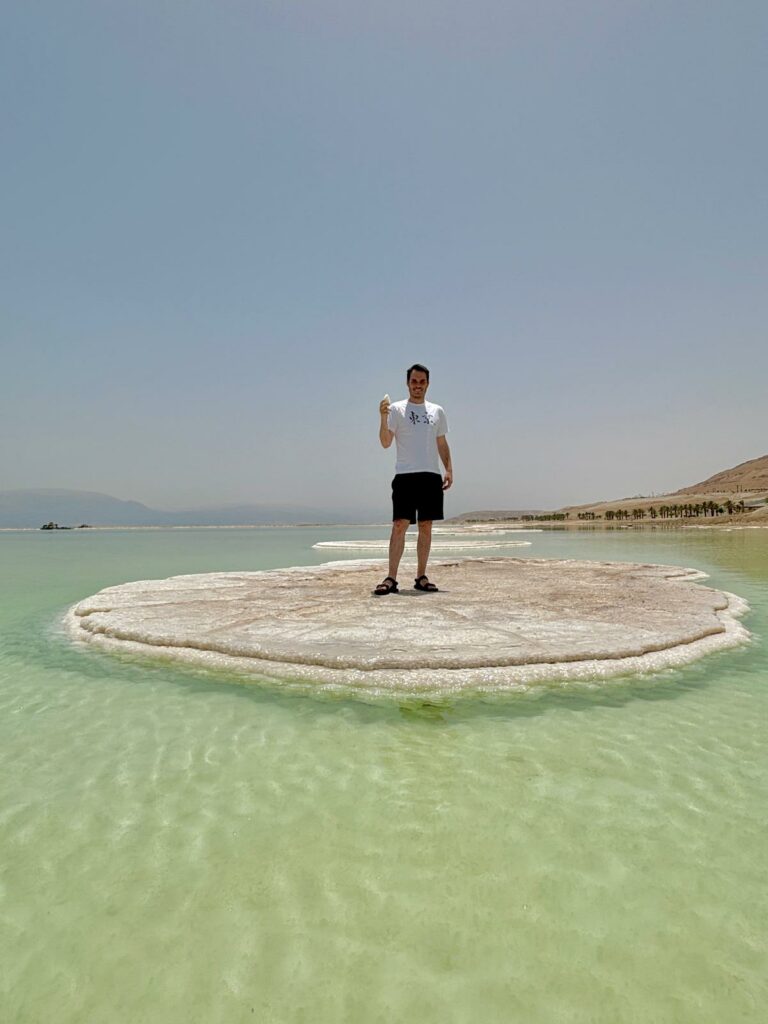On an impressive cliff with breathtaking views overlooking the Dead Sea, lies the fascinating Qumran National Park. As the discovery site of the immensely important Dead Sea Scrolls, it is one of the best sites to visit for history lovers, even in a historical land like Israel. Here, we have gathered everything you need to know to plan your visit to the Qumran Caves.
The Discovery of the Dead Sea Scrolls
In the fall of 1947, a Bedouin shepherd went out to look for a stray goat that he had lost near Ein Tzukim, nearby the Dead Sea. In his search, the shepherd had reached a cave, and in an attempt to drive the goat out of it, he threw a stone inside. An explosive sound of broken pottery sparked his curiosity, and the shepherd entered the cave and found several pottery vessels, one of which was broken. He also smashed the rest of the jars with his stick and discovered inside them leather scrolls covered with dense writing. These are the first of what are today called the Qumran Scrolls, the Hidden Scrolls, or the Dead Sea Scrolls – a collection of ancient Hebrew writings over two thousand years old.
Those scrolls are the earliest Hebrew manuscripts, as they do back to the first and third centuries AD and shed some light on one of the most important and turbulent periods in the life of the Jewish people. In addition, their large number (more than 900) and the fact that they were well preserved allows researchers to gather plenty of new information about this historic period.
Among the important scrolls, you can find a complete version of the book of Isaiah, the “Copper Scroll” which tells the story of a hidden treasure, and the “War of the Sons of Light against the Sons of Darkness” scroll. Today, all of the scrolls are kept in the Shrine of the Book, as part of the Israel Museum in Jerusalem.
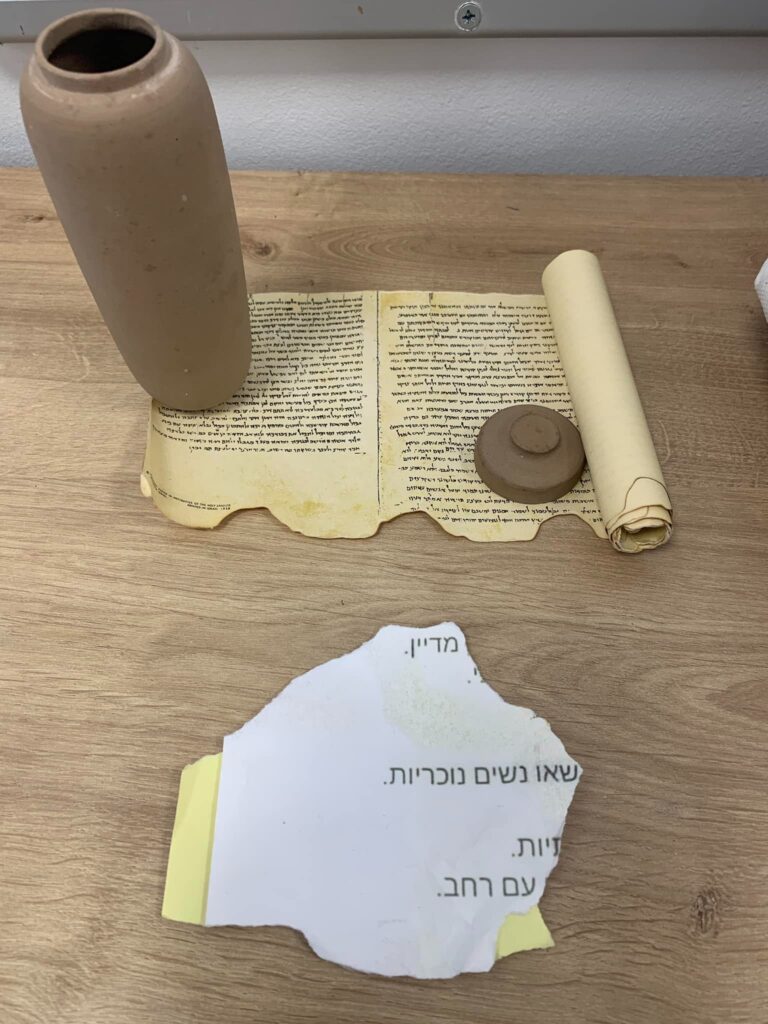
The ancient life in Qumran
Due to the discovery of the scrolls, the Qumran site itself was excavated between 1952-1956, under the direction of the Dominican monk Father Roland de Vue.
A whole village was discovered on the site, with a building that indicates that its inhabitants lived a communal life. It is the oldest known monastery in the Western world. The sect that seated the village was, apparently, only comprised of men, who As far as is known, had never wed. Qumran’s old inhabitants are commonly identified as part of the Essene sect, as Many testimonies indicate a close relationship between the Essene sect and the beginning of Christianity.
The Essenes’ way of life was very similar to that of the first Christians, and the main principles of their faith were mostly similar – modesty, contentment with little property, and communal life. One of Jesus’ famous sermons – the Beatitudes sermon – is very similar to one of the sermons found in the Qumran Scrolls. Even Paul, one of the two senior apostles of Christ, quotes in the New Testament a passage about “the children of light and the children of darkness”, who are considered to be the Essenes. In addition, it is known that John the Baptist baptized Jesus in Qasr al Yehud, which is very close to Qumran. All these make Qumran a site where you can easily connect and feel the very beginning of Christianity, which in those days had not yet separated from Judaism and taken its first steps in the world.
Best things to do in Qumran National Park
Qumran National Park visitor center
Right after the park’s entrance, is a visitor center, which offers a great way to start your visit to Qumran Caves. With a small museum, displaying the lifestyle in the old settlement, and a short educational movie about Qumran, it’s a great way to learn more about the fascinating history of the place.
Qumran Caves Archeological Site
The main interest point of your visit to Qumran is the stroll between the several ancient ruins of the settlement. The site’s trail is accessible and goes around ancient Assembly rooms, a central dining room, where ceremonial feasts were held, remains of a kitchen, a watch tower, a workshop, and a stable. At the southern end of the site, is an observation point that overlooks the Qumran River and the Cave of the Dead Sea Scrolls. To the east of the lookout is the cemetery of Qumran, with about 1,100 graves. Most of the men buried here were young, probably because the harsh weather conditions and the ascetic lifestyle discouraged older people from living there.
The accessible path passes by two kilns for firing pottery and by an ancient toilet facility with a washing pitcher. Next to another Bathing facility, in front of the toilets, two scribes’ rooms were found. In these rooms, the people of Qumran wrote their writings and read the books of the Bible, on tables made of stone. Two pottery inkwells and a metal inkwell were also found here, which were probably placed in the sockets of the tables. Hundreds of clay candles were uncovered in these rooms as well, enabling the writers to study at night.
The park also hosts night tours by lantern light and tours that recreate the discovery of the scrolls and the dramatic operation to excavate them.
Dead Sea Scrolls Trail
Another great way to experience the history and landscapes of Qumran is the Scrolls Trail, which winds at the foot of a dramatic cliff in the Judean Desert. The trail starts at the Qumran National Park visitor center and is a short route full of views to some of the fascinating caves where the Dead Sea scrolls were discovered. From every viewpoint, while looking at several of the Qumran Caves, you can read detailed explanations of the discovery of the scrolls.

